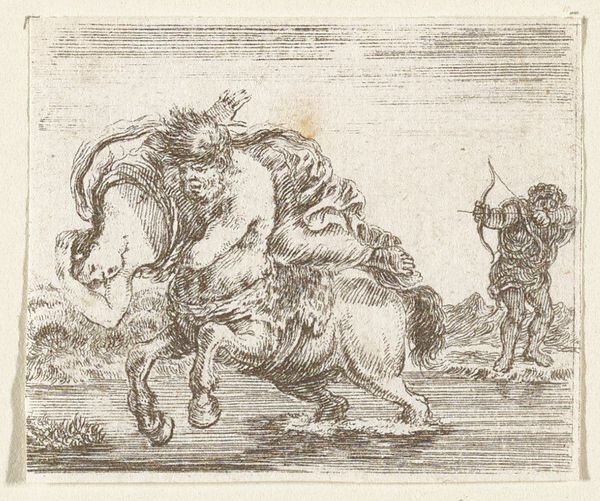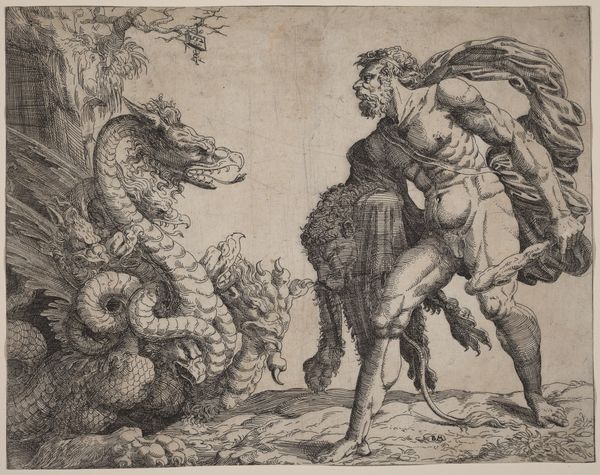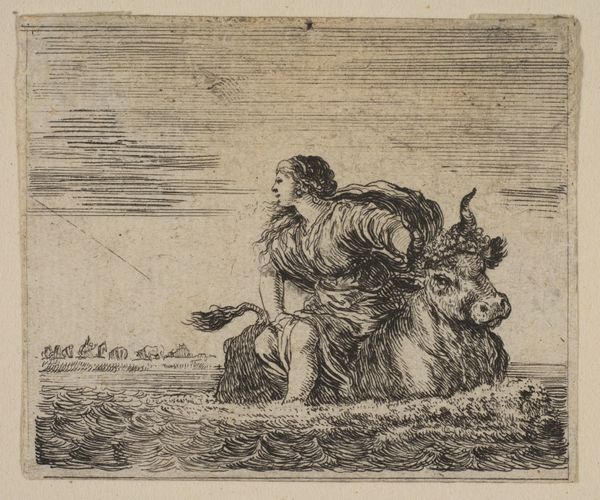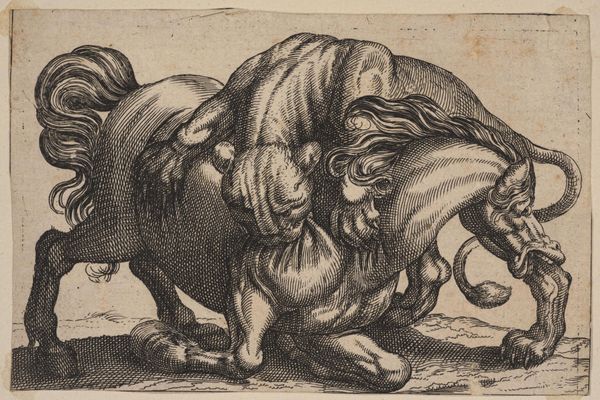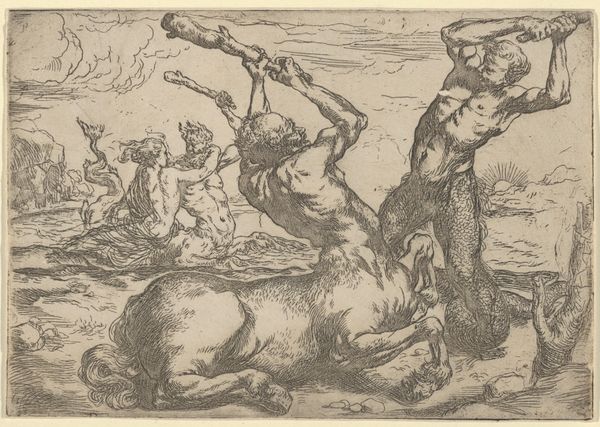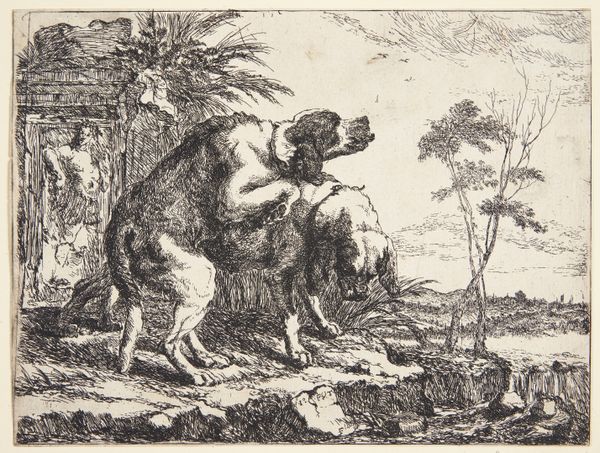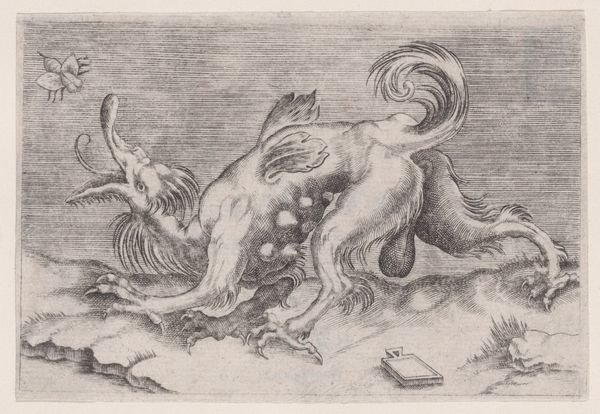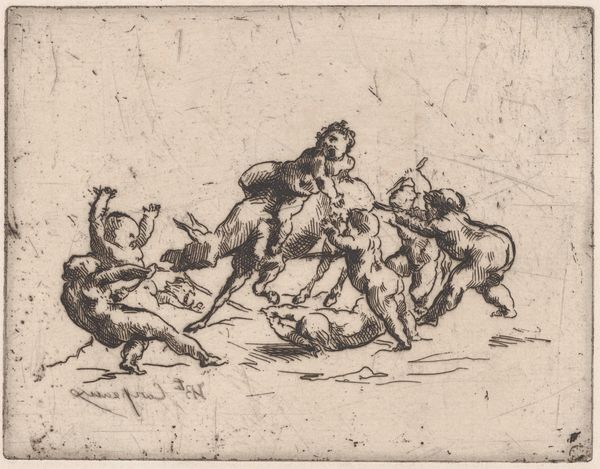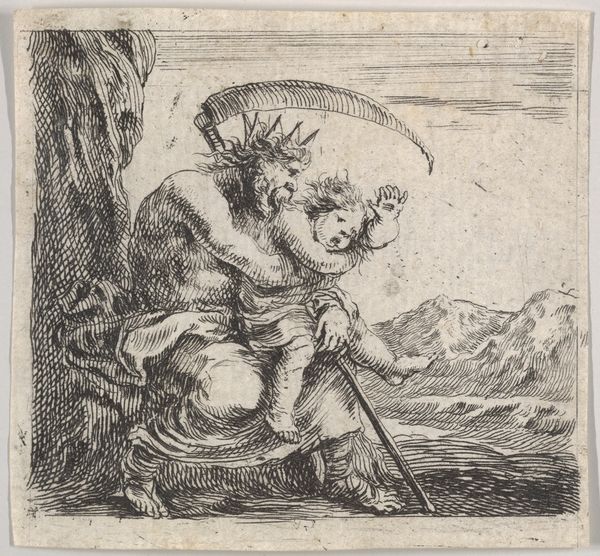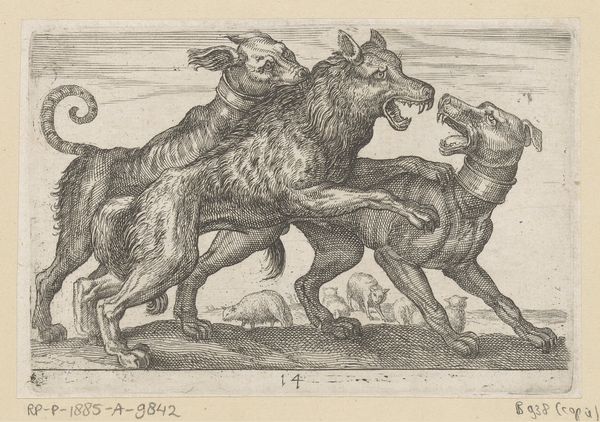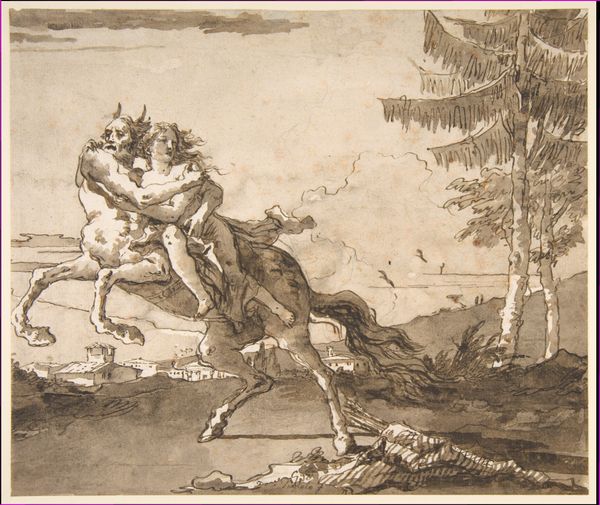
Hercules and Deianira, from 'Game of Mythology' (Jeu de la Mythologie) 1644
0:00
0:00
drawing, print, engraving
#
drawing
#
baroque
# print
#
figuration
#
history-painting
#
engraving
Dimensions: Sheet: 1 3/4 × 2 3/16 in. (4.5 × 5.6 cm)
Copyright: Public Domain
Curator: This engraving, Stefano della Bella’s "Hercules and Deianira," dated 1644, from 'Game of Mythology,' really catches the eye with its dramatic action. What are your initial thoughts on it? Editor: It's definitely dynamic! Hercules is the epitome of muscular tension, Deianira is contorted backwards and about to fall off, and in the background the archer draws his bow! As a drawing, it must have taken so much practice and skill to get these delicate lines and composition, especially back in the 17th century. How do you interpret this work, considering it was part of a "game"? Curator: Exactly! And let's consider how the printmaking process itself shaped the image. Della Bella had to physically manipulate the metal plate to create those fine lines. It suggests a meticulous labor, one readily consumed within the playful context of this game. Note too, how the Baroque aesthetic emphasizes motion and emotion. Where do we locate the social meaning, if it can be consumed like an object for games? Do we think about the printing run in the means of its consumption, or on its artistic value? Editor: That's an interesting question. I suppose, thinking materially, it's both an artistic endeavor and a product, designed to be reproduced and disseminated within a particular social circle playing the game. The cost, accessibility, and durability all come into play. It couldn't just be aesthetically impressive; it also needed to be reproducible at a decent output to justify production of a luxury object. Curator: Precisely. Its value then resided in both its artistic quality *and* its social function. Think, too, about the engraver's own labor. How does this small engraving participate in the larger economics of the time? Editor: So it is all connected – the materials, the technique, the artist's labor, the societal function of art. Fascinating!
Comments
No comments
Be the first to comment and join the conversation on the ultimate creative platform.
